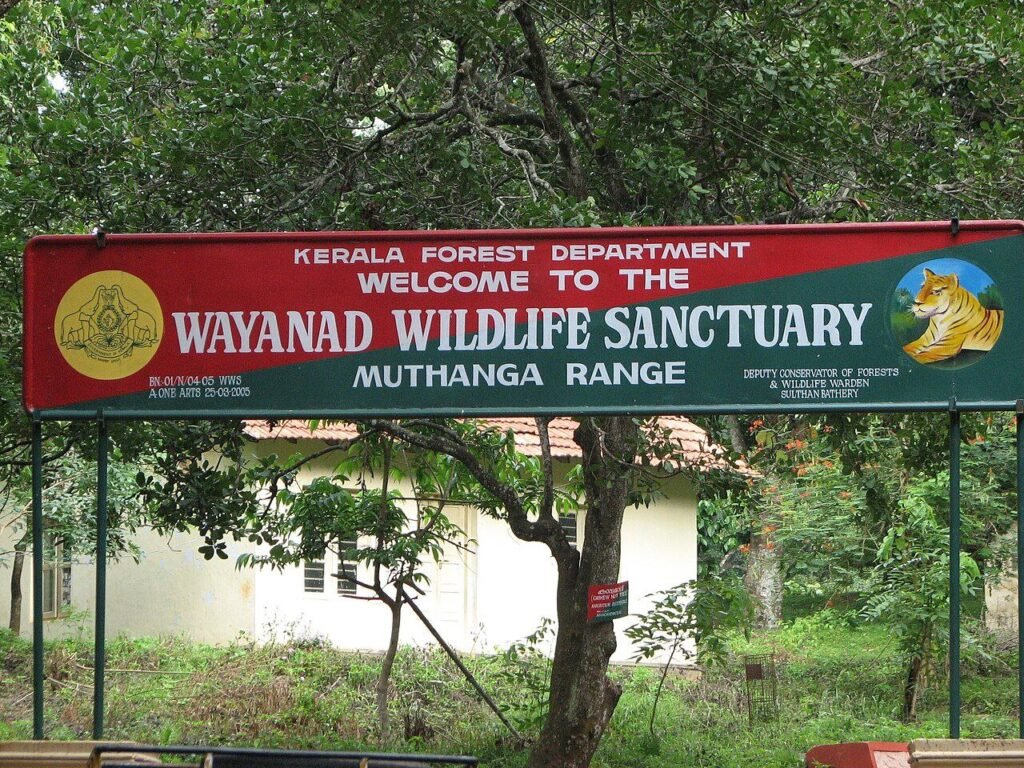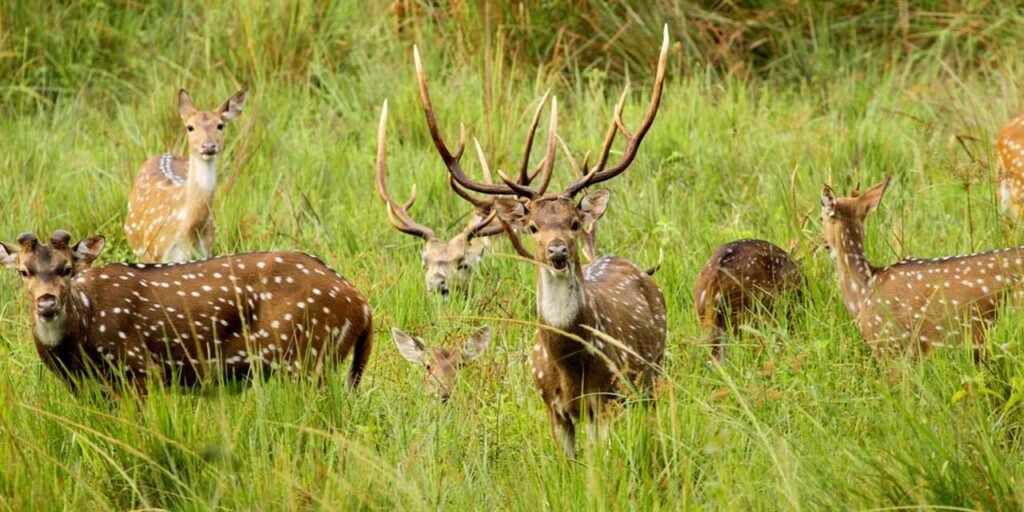Introduction
Wayanad Wildlife Sanctuary, Kerala’s second-largest sanctuary, is a green oasis rich in wildlife and biodiversity. Established in 1973, this sanctuary is a vital part of the Nilgiri Biosphere Reserve, connecting with nearby protected areas to create a safe haven for animals and plants alike. Its dense forests, scenic landscapes, and abundant wildlife make it a sought-after destination for eco-tourism. Whether you’re an adventure enthusiast, a wildlife photographer, or simply a nature lover, Wayanad Wildlife Sanctuary promises an unforgettable experience.

Wayanad Wildlife Sanctuary’s Flora and Fauna
Spanning over lush landscapes, Wayanad Wildlife Sanctuary is a treasure trove of flora and fauna. The sanctuary is home to large mammals like elephants, tigers, leopards, and gaurs. Deer herds, langurs, and a variety of bird species also thrive in this vibrant ecosystem. The sanctuary’s dense forests are dominated by teak, eucalyptus, and bamboo, providing a lush green backdrop and a natural habitat for many creatures.
The sanctuary is divided into two major sections: Muthanga in the south and Tholpetty in the north. Each offers unique opportunities for wildlife spotting, nature trails, and immersive experiences in the forest.
Things to Do at Wayanad Wildlife Sanctuary
- Jeep Safari: One of the best ways to explore Wayanad Wildlife Sanctuary is through a guided jeep safari. Safaris take you deep into the forest, where you may spot elephants, sambar deer, and even elusive tigers. Each safari is led by an experienced guide who can help you identify animal tracks and provide insights into the forest’s ecosystem.
- Bird Watching: The sanctuary is a hotspot for bird enthusiasts. With many migratory and native birds visiting the area, you’ll have the chance to observe vibrant birdlife, from peacocks and hornbills to owls and eagles. Bring binoculars and a camera to capture these beautiful species in their natural habitat.
- Guided Nature Walks: For those who prefer a slower pace, guided nature walks offer an up-close experience of the forest. Knowledgeable guides share fascinating information about the trees, plants, and smaller animals that call the sanctuary home. These walks are an educational journey into the unique biodiversity of Wayanad.
- Photography: With its enchanting landscapes and diverse wildlife, Wayanad Wildlife Sanctuary is a dream for photographers. From towering trees to majestic animals, every corner of the sanctuary offers picture-perfect scenes.

Nearby Attractions to Explore
Wayanad Wildlife Sanctuary is surrounded by several other attractions, making it an ideal base for a complete Wayanad experience:
- Edakkal Caves: Just 25 km away, these caves feature ancient rock carvings dating back thousands of years. A hike up to the caves is a must for history and adventure lovers.
- Banasura Sagar Dam: Located nearby, Banasura Sagar is the largest earthen dam in India. Surrounded by hills, it’s a beautiful spot for picnics and boating.
- Pookode Lake: Around 30 km from the sanctuary, this freshwater lake is surrounded by forests, offering a serene escape for boating and relaxation.
Essential Information for Visiting Wayanad Wildlife Sanctuary
Visiting Hours
The sanctuary is open daily with two time slots for visitors:
- Morning: 7:00 am – 10:00 am
- Afternoon: 3:00 pm – 4:30 pm
Entry Fees
- Indian Adults: Rs. 20
- Children below 12 years and bonafide students: Rs. 10
- Foreign Tourists: Rs. 110
Additional Charges
- Still Camera: Rs. 25
- Video Camera: Rs. 150
- Parking: Rs. 50 for light vehicles, Rs. 150 for heavy vehicles
- Guide Fee: Rs. 100
- Jeep Safari: Rs. 300 per person
Best Time to Visit
The ideal time to visit Wayanad Wildlife Sanctuary is between October and May. During this season, the weather is pleasant, and the chances of spotting wildlife are higher. Monsoons (June-September) bring lush greenery but also make roads slippery and wildlife sightings less frequent.
Tips for a Responsible Visit
- Respect the Wildlife: Remember, this is their home. Keep a safe distance from animals, avoid loud noises, and don’t disturb them.
- Leave No Trace: Carry any waste back with you, and avoid littering in the sanctuary.
- Follow Guidelines: Listen to your guide’s instructions and adhere to park rules to ensure a safe and enjoyable experience for everyone.
Conclusion
Wayanad Wildlife Sanctuary is a gem for anyone seeking a true wildlife adventure in Kerala. With its diverse ecosystems, scenic landscapes, and commitment to conservation, it offers a unique experience for eco-tourists and adventure seekers alike. Whether you’re tracking wildlife on a jeep safari, enjoying a serene walk, or capturing the beauty of nature through your lens, Wayanad Wildlife Sanctuary provides an authentic connection to the wild.
So if you’re planning a visit to Kerala, don’t miss the chance to explore Wayanad Wildlife Sanctuary. Experience the thrill of the wild and create memories that will last a lifetime.



